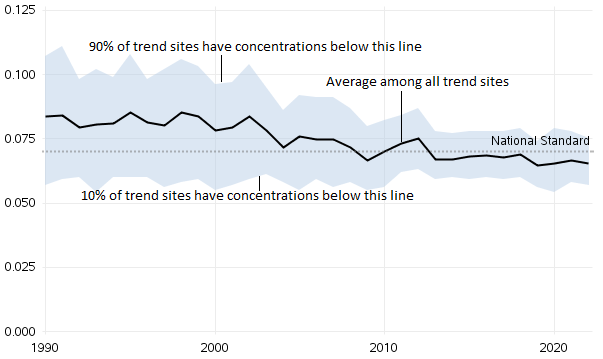Air Quality Trends - How to Interpret the Graphs
The blue band shows the distribution of air pollution levels among the trend sites, displaying the middle 80 percent. The black line represents the average among all the trend sites. Ninety percent of sites have concentrations below the top line, while ten percent of sites have concentrations below the bottom line.

For each pollutant, the trend statistic is directly related to the level and averaging time of the National Ambient Air Quality Standard (NAAQS). For more information regarding the levels and averaging times for the NAAQS statistics, see the NAAQS Table.
